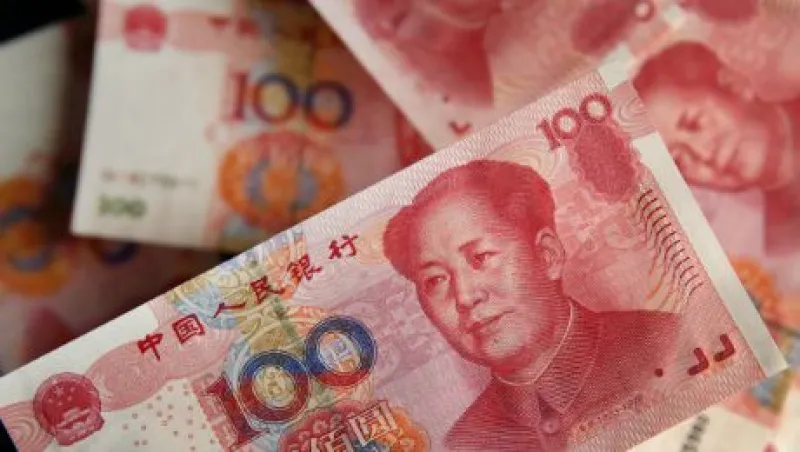A surprise decision by the People’s Bank of China (PBOC) to effectively devalue the renminbi for the first time in 22 years will is sending ripples across Asian markets and will provoke a cascade of competitive devaluations by countries across the region, economists say.
The move should also help boost Chinese competitiveness and growth in the short term while helping to facilitate structural reforms in the longer term, analysts say. By encouraging reforms, the change appears to increase the likelihood that the International Monetary Fund will include the renminbi in its currency basket, the Special Drawing Right (SDR), in coming months, they added.
The central bank stunned markets on Tuesday morning in Beijing by announcing that it would set central parity for the renminbi, its daily exchange rate fixing, based on the closing rate in the interbank market the previous day and market makers’ estimate of supply and demand factors. That represented a major change from its previous practice of allowing the fixing to fluctuate within a range of plus or minus 2 percent around the central bank’s own target rate. In the wake of the move, the currency was fixed at 6.2298 yuan to the dollar, down 1.9 percent from the previous day.
It was the biggest decline in the renminbi’s value since the start of 1994, when the authorities devalued the currency by 33 percent at a stroke to support exports.
“Other Asian countries will see today as a competitive devaluation from China,” says Bert Gochet, a Hong Kong–based currency strategist at J.P. Morgan. He predicted that other currencies, including the Korean won, the Singapore dollar and the Taiwan dollar would be next in the firing line for depreciation moves. All three of those currencies, as well as the Australian and New Zealand dollars, fell by more than 1 percent against the U.S. dollar on Tuesday, whereas other Asian currencies posted more modest losses.
Other analysts put a positive spin on the PBOC’s policy shift. “In our view, the change could both boost economic growth by improving China’s export competitiveness and promote structural reforms that could help renminbi’s case to be included in the International Monetary Fund’s Special Drawing Right basket,” says Jianguang Shen, Hong Kong–based China economist with Japanese brokerage firm Mizuho Securities Asia. On August 5 the IMF announced it would delay any revisions to the SDR basket for nine months and, in the meantime, would determine if the renminbi fulfilled its criterion of being “freely usable” as a global currency.
The last time Beijing devalued its currency was nearly 22 years ago, when the central bank slashed its then-fixed rate to 8.7 to the dollar. That dramatic move helped China to become an export powerhouse over the following decade. Under pressure from the U.S. Congress, China moved to a managed-floating exchange rate system in 2005, and since then the currency has effectively moved in only one direction.
In its announcement, the PBOC said the new method would increase the relevance of the daily fixing by making it more reflective of market forces. In recent months the markets have exerted persistent downward pressures on the renminbi, reflecting weaker Chinese growth and expectations for an increase in interest rates by the U.S. Federal Reserve Board.
“While such language seems to hint at a major step in the reform of the FX regime, and while it is also in line with some of the recommendations that were made in the IMF SDR report last week, we caution to read too much into this statement,” J.P. Morgan’s Gochet says. He points out that a PBOC spokesperson described Tuesday’s depreciation as a “one-time correction.”
Wang Tao, chief China economist at UBS Securities in Hong Kong, says the policy shift by the central bank signals an end to the days when the renminbi moved in only one direction — up. “We think today’s move signals a new government willingness to let the RMB slide more against the U.S. dollar than previously,” she says, predicting that the currency would decline to 6.5 to the dollar by the end of this year and to 6.6 by end of 2016.
Beijing hasn’t converted to a laissez-faire approach, so the currency’s decline is likely to be gradual, Wang says. “We think it unlikely that the Chinese government will let only market momentum drive the renminbi exchange rate from now on, as that can be quite destabilizing,” she says. “We think the government may still want to take a relatively cautious approach on the exchange rate front. The upcoming SDR review is one consideration, and avoiding destabilizing depreciation expectations and capital outflows would be a more important one.”
Peng Wensheng, global chief economist and head of research at CITIC Securities in Hong Kong, said a bidirectional exchange rate driven by market forces — rather than one that only moved up — will help accelerate China’s financial liberalization, which in turn should encourage a shift in capital away from real estate and heavy industry in favor of small and medium-size enterprises and emerging industries. “Such developments would stoke structural transformation and is conducive to the sustainable growth of the Chinese economy,” he says.
Get more on emerging markets.
Follow Allen Cheng on Twitter at @acheng87.






